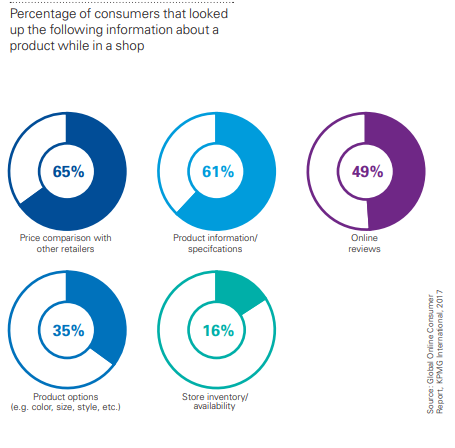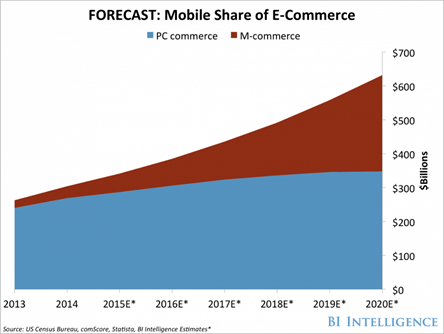Five Ways to Master Digital Transformation in 2021
The retail landscape was already changing rapidly, thanks to a digital revolution that has changed how we work, shop, and live. Add in a global pandemic, and you have a massive and widespread societal shift toward digital transformation. Consumers have quickly formed new online shopping habits that demand the same, if not better, service than they’ve experience before. Retail merchants must adapt to these changes as quickly as possible to be competitive.
Retailers who had already made the digital leap pre-COVID recognized that consumers were likely stuck at home and almost constantly online. They took advantage of the long-term relationship-building opportunities this shift presented.
If you weren’t one of these retailers, or if your digital strategy is still underdeveloped, it’s not too late to catch up. To help, we’ve identified five ways to transform your digital strategy for 2021.

Think of Your Digital Presence as Your Store
In the same way customers once perused products in a physical store location before making a purchase, many now do this browsing online.
The kicker? Even the customers who are in physical stores are still looking online. Over two-thirds of consumers in a KPMG study said they had used a smartphone for product research while in a physical shop, either to compare prices or look up product information and reviews.

The takeaway? At a bare minimum, your online presence needs to be designed and merchandised to create a pleasant, convenient, and informative browsing experience. Consumers expect an easy-to-use interface and design that’s pleasing to the eyes. They are also looking at inventory levels, shipping costs, pick-up options, and the sophistication of your customer service interface. All of these factors impact whether a customer who is “just looking” online will make a purchase – and will also impact whether your brick-and-mortar locations will make the sale.
Shift Digital Strategy to Make Mobile Primary
Speaking of mobile, back when physical stores first started transitioning to digital, the focus was on creating an online shopping experience consumers could access on their desktops. This proved to be effective, and online shopping saw a steady increase.
Now, that trend has evolved from desktop to mobile – Business Insider reported that in 2019, mcommerce comprised over a quarter of total ecommerce, more than doubling since 2015. And that doesn’t even take into account how much revenue mcommerce influences when its used to browse and gather product information.

As such, merchants can’t afford to ignore mobile, and must treat their mcommerce as a completely discrete channel, not as just the “mobile version” of their desktop site.
Delivery updates, pickup instructions, and in-store scanning capabilities are functionality that make the shopping experience more intuitive. And regardless of how long the need for social distancing persists, shoppers are now conditioned to expect a safe, touchless experience.
Merchants also need to consider the impact the switch to mobile can have on fraud rates. Card-not-present fraud runs rampant on mobile sites and apps, especially in high-risk industries like fashion, travel, electronics. At the same time as you upgrade or develop your mobile app or site, you will also need to protect your investment.
Realign Physical Stores to Facilitate Order Fulfillment
Many retailers have had to rethink their warehousing and inventory strategies, thanks to pandemic-related delays and stoppages. Physical stores are seeing less foot traffic while online stores are being inundated with orders.

Consumers will eventually have much more opportunity to come back into physical stores, but they may not be as willing to do so when ordering online is so easy. Consider re-evaluating each of your physical locations to determine if they can be repurposed. A centrally-located store may become a fulfillment center. Other stores might lend themselves to easy-access curbside pick-up locations.
With this shift, make sure to re-align inventory, especially during peak buying seasons and based on pandemic-related buying habits. Inventory needs will vary, depending upon whether each location is handling fulfillment, pick-up, or in-store sales.
Don’t forget about communication. Shortages due to manufacturing stoppages and delayed deliveries will impact your brand’s customer service. Communicate anticipated shortages ahead of time, especially to customers with open shopping carts. Send real-time notifications when products are back in stock. Keep the conversation between your brand and your customer alive with useful, timely information about the products they purchase.
Create Personalized Customer Experiences
Today’s consumers want to be seen and recognized as individuals. They know companies track purchase history and preferences and they expect that information to be used in communicating with them. The payoff of doing so is significant. Accenture reports that 75% of customers are more likely to buy from a company that recognizes them by name, knows their purchase history, and recommends products based on their past purchases.

This information can be used to provide new experiences and cross-sell/upsell opportunities. Start with carefully curated product recommendations during the shopping experience. Give in-store associates access to customer information prior to in-store pickups so they can make upsell or cross-sell suggestions. Even creative merchandising of impulse items in curbside pickup tents can increase transactions.
View Multichannel Marketing as a Core Strategy
Consumers have become accustomed to instant gratification when it comes to finding and purchasing what they want, when and how they want it. They expect responses to customer service inquiries within one hour, even on weekends, and real-time access to information.
As if that doesn’t pose enough of a challenge, consumers have become channel agnostic. They browse on their desktops, purchase on mobile apps, and take to social media apps to rave, complain, or ask questions.
The more channels a retailer operates, the more work it will be to aggregate all the data needed to fully understand the customer and their buying journey. That doesn’t mean retailers should avoid multichannel marketing – but it is something that should be done strategically.
Before developing your multichannel marketing strategy, here are a few things to consider:
- Quality over quantity. You don’t have to invest in every channel, just the ones that make the most sense for your business, your product, and your customer.
- Be consistent. Customize the experience in each channel, but make sure your branding and messaging are clear and consistent across all of them.
- Deliver on value. Use the 1:4 social media rule when making offers: for every single self-promotional notification, deliver four consumer-focused and high value messages.
- Know and segment your customers. Let your customers tell you what they’re interested in with content options for each channel.
- Consider international markets. If you are expanding into international markets for to increase revenue, remember consumers in those markets may lean toward different channels.
Expand Digital Payment Capabilities
The pandemic has made contactless payments so prevalent, 58% of consumers who’ve used contactless payments report they will be more likely than ever to do so again. These “frictionless” payment technologies are projected to be valued at $4.6 trillion by 2021.
Digital wallets – now considered the bare minimum for contactless payments – have a high adoption rate among digital-friendly merchants. For those merchants who do at least half of their sales online, 70 percent have integrated digital wallet technology into their ecommerce sites and mobile apps. The good news for merchants is payment processors have already made the jump and have the tools and technologies in place to help you digitize your businesses.

To be competitive and profitable in 2021 and beyond, merchants need to invest in digitizing their businesses and transform their existing ecommerce sites to keep up with digital trends. At the same time, merchants need to be fully aware that more online transactions also means more potential for fraud. ClearSale’s informational webinars feature industry experts who helped countless retailer make this shift while protecting their revenues.
 Rafael Lourenco
Rafael Lourenco

